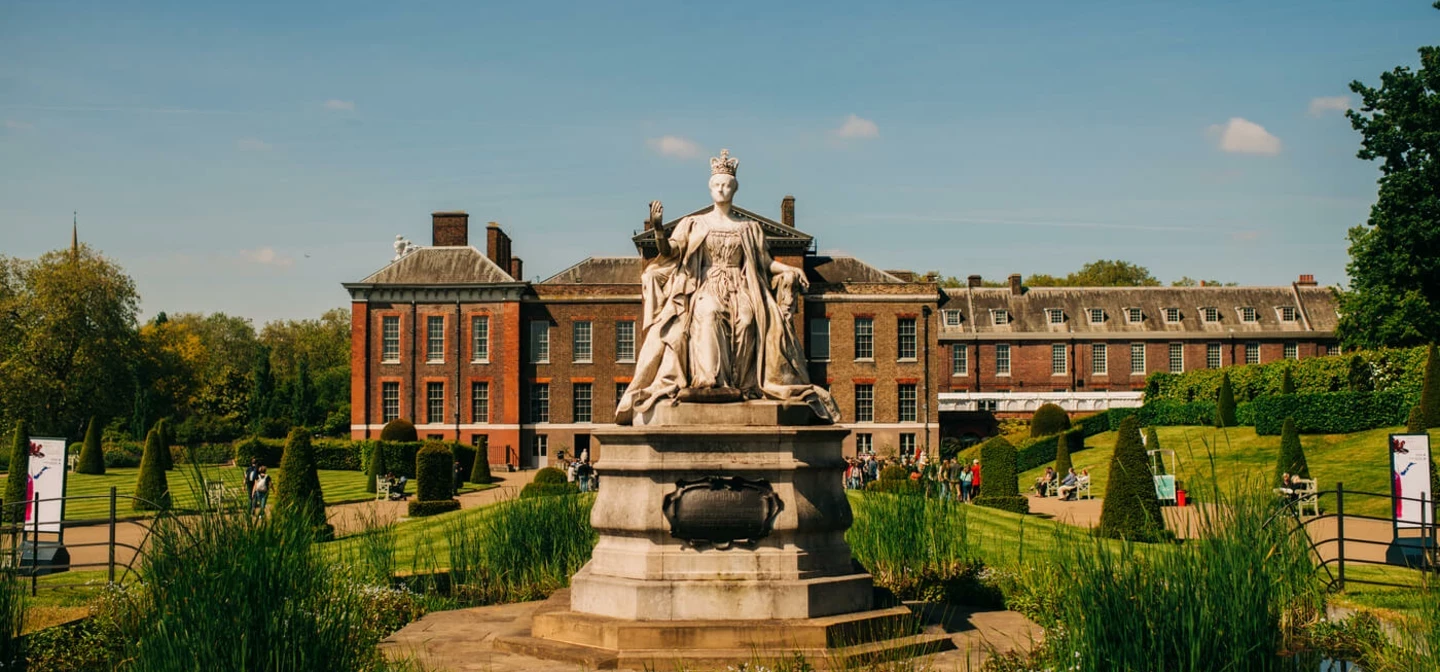
History of Kensington Gardens
Key information
From fountains to fairy tales, royal palaces to Peter Pan. London’s Kensington Gardens, situated between Bayswater and Kensington, is place of history and fairytale.
In the beginning…Kensington Gardens in the 1500s
Kensington Gardens began life as one of King Henry VIII’s many hunting parks. The land was actually part of Hyde Park until, in 1689 King William III and his wife Queen Mary decided to build a new home – Kensington Palace – next to the park. To create a private garden for their new Palace, they carved off part of Hyde Park to create Kensington Gardens.
Queen Mary had a discerning eye for garden design and commissioned a palace garden of formal flower beds and box hedges in the Dutch style.
Kensington Gardens and the Georgians
It was another queen –Caroline, wife of George II – who in 1728 took the landscape of Kensington Gardens one stage further. The landscape of Kensington Gardens that we enjoy today is largely down to her, and her innovative garden designer, Charles Bridgeman. Together, they created the winding Serpentine – one of the first artificial lakes in the country designed to appear natural, rather than formal.
Queen Caroline and Charles Bridgeman also blazed a trail by opting for a ditch, rather than a fence, to separate Kensington Gardens from Hyde Park. This clever solution which created a boundary without interrupting the view, became known as a ha-ha. This name was said to reflect the surprise of ramblers who suddenly came across it! This started a trend, and copycat ha-has began to appear at grand houses across the country.
For most of the 1700s, Kensington Gardens was closed to the general public. In 1841, it opened to the public on Saturdays only, and only if you were ‘respectably dressed.’ Its formal gardens and walks were designed for stately promenading and discreet people-watching.
Kensington Gardens and the Victorians
We have a third queen to thank for two of the most celebrated and enduring historic features in Kensington Gardens. In a long series of improvements, Queen Victoria commissioned the Italian Gardens and the Albert Memorial. Prince Albert gifted the Grade II listed Italian Gardens to the Queen, to remind her of the delightful Italian gardens on the Isle of Wight, where the family holidayed.
In 1861 Queen Victoria suffered the great tragedy of her life - the premature death of her beloved husband, Prince Albert. To honour his memory, she later commissioned a magnificent tribute. This was the towering Albert Memorial, a grand, gothic extravaganza designed by architect Sir George Gilbert Scott.
The memorial shows Prince Albert holding the catalogue of the 1851 Great Exhibition, which he had helped to organise – one of his greatest personal achievements.
The magical history of Kensington Gardens
Kensington Gardens is one of London’s loveliest parks for children. In the early 1900s, local resident J. M. Barrie was inspired to write Peter Pan after many happy visits to the park. In 1912, he paid for a bronze statue of his famous hero to be placed in the park. Since then, generations of children have visited Kensington Gardens to meet the beloved ‘boy who couldn’t grow up’. Not far from here is the curious Elfin Oak – an ancient, gnarled tree stump that has been carved with the figures of fairies and small animals. The Elfin Oak was designed by Ivor Innes in 1930.